Developer’s Guide¶
To start contributing to judgels development, you can view the project hosted on github. We put the issues of all judgels applications in that repository.
You can help by submit a new issue if you found one or fix a opened issue. In order to fix the issue, you can read below for to learn of our “teachings” of judgels development.
We develop judgels using Play Framework 2.3.8, SBT, and IntelliJ IDEA 14. Since, we develop many judgels application, we create the commons that can be reused within many applications.
The commons are:
Judgels Play Commons
Judgels Play Commons consists of classes related to base layout rendering of views, less css, and javascripts. Judgels projects that use Judgels Play Commons can have the similar look and feel with every Judgels Application. The look and feel can be customized in each Judgels projects.
Below are the images of two applications with similar look and feel using Judgels Play Commons.
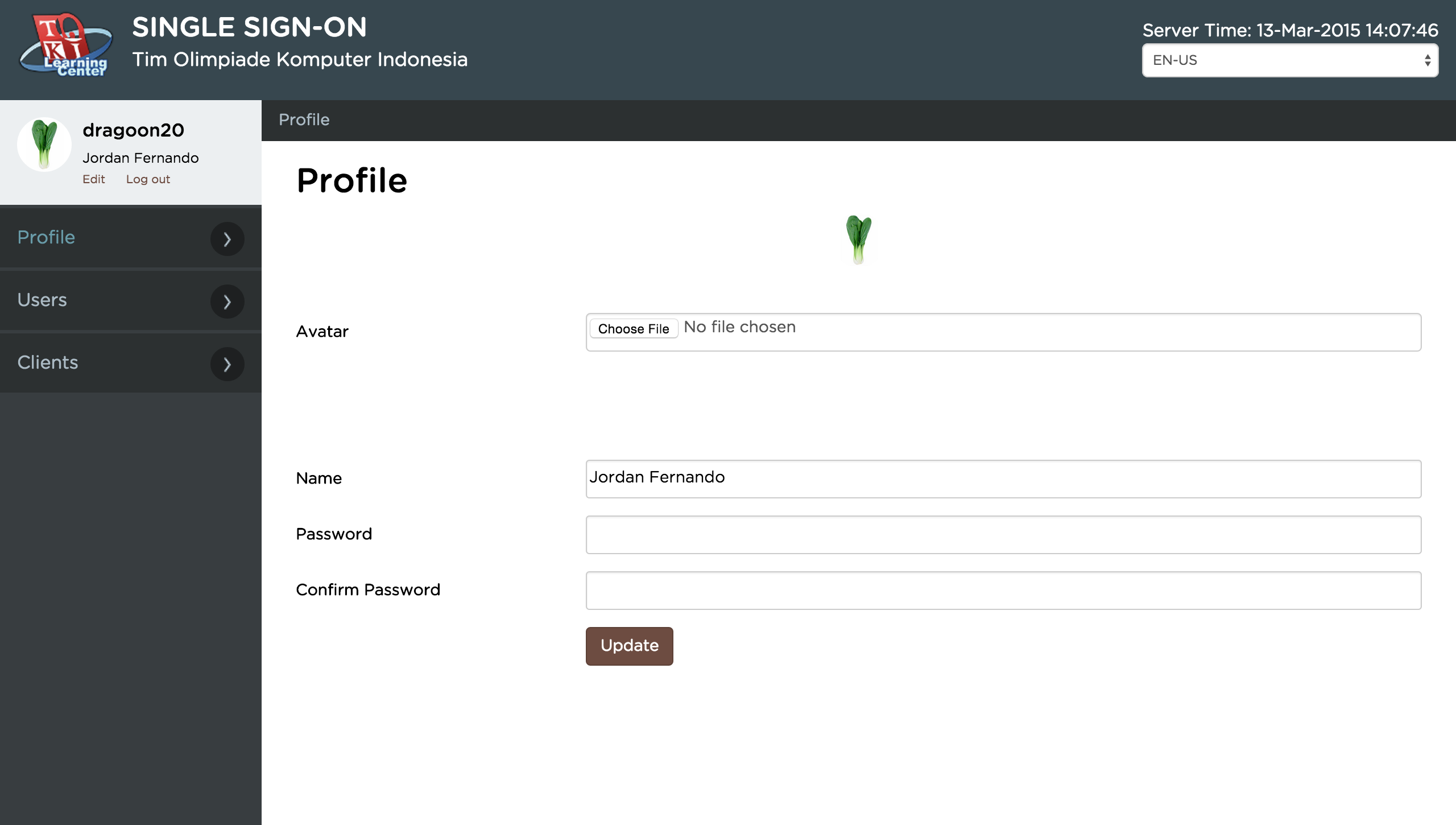
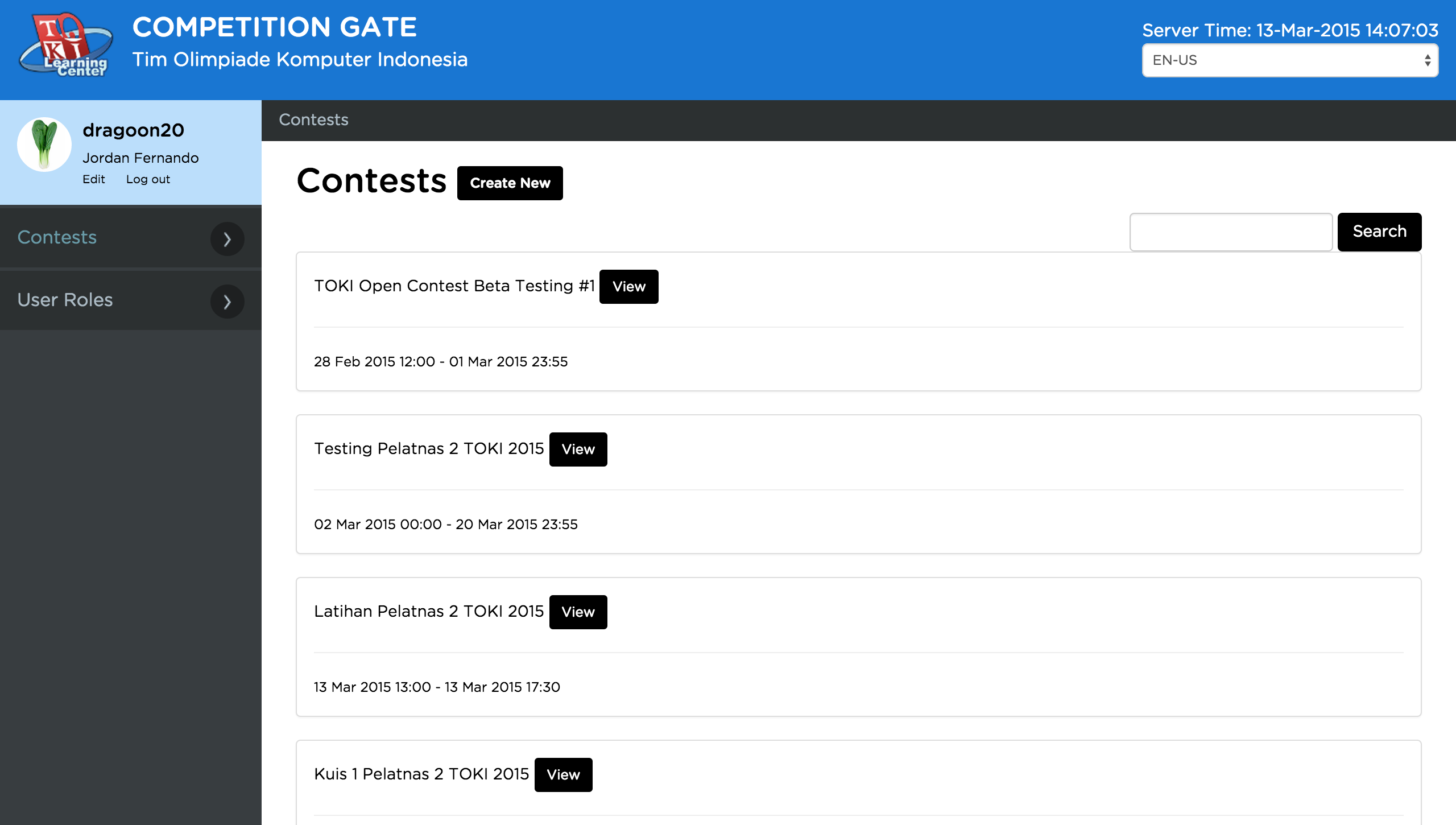
Judgels Gabriel Commons
Judgels Gabriel Commons consists of classes that contains implementation of grading engines. This commons is created to separate the grading engines from Gabriel. For Gabriel, grading engines only act as the implementation and Gabriel doesn’t need to know about the detail.
Judgels Gabriel Commons is also used in Judgels applications to list all available grading engines and construct grading messages that is supported by Gabriel.
Judgels Frontend Commons
Judgels Frontend Commons consists of classes that helps Judgels applications to connect to each others. Some of the classes are to provide problem rendering for Sandalphon’s clients, single sign on for Jophiel’s clients, etc.
Judgels Frontend Commons also depends on Judgels Play Commons for layout and Judgels Gabriel Commons to provide base submission polling class. The dependency of Judgels Frontend Commons can be seen in image below.

To use commons, Judgels applications directory must be on the same level as the commons directory. The build dependencies for all Judgels applications are shown in the image below.
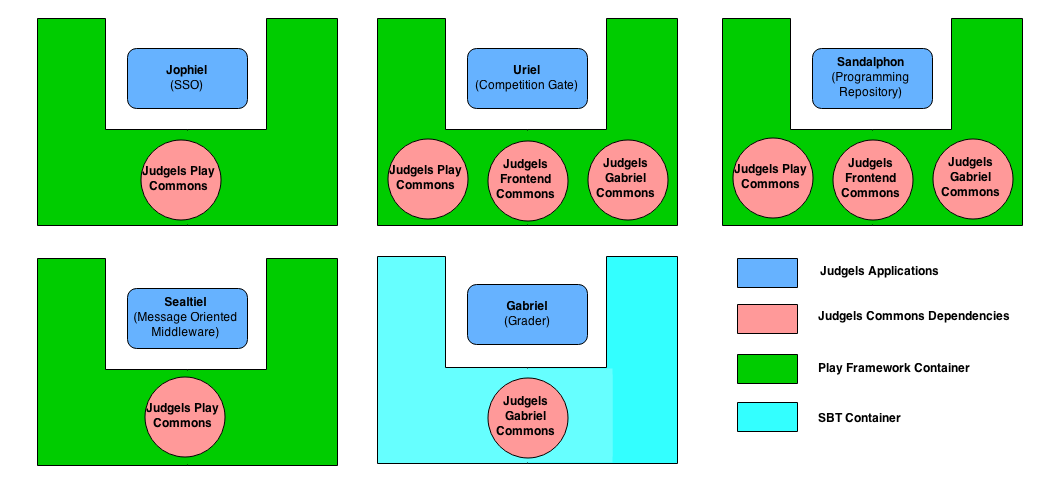
Besides commons, Judgels applications are also connected to each other. The dependencies for Judgels applications:
Jophiel
Jophiel doesn’t have any dependencies to any Judgels applications as shown in the image below. Jophiel can be run and provide single sign on service independently.
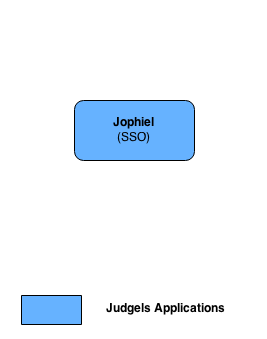
Sandalphon
Sandalphon has dependencies to Jophiel for authentication and authorization and to Sealtiel for sending grading message to Gabriel.
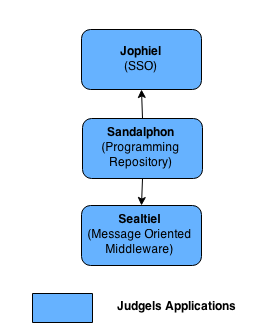
Uriel
Uriel has dependencies to Jophiel for authentication and authorization, to Sandalphon for rendering problems, and to Sealtiel for sending grading message to Gabriel.
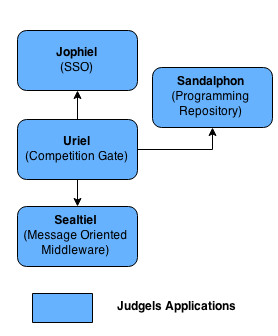
Sealtiel
Sealtiel has dependencies to RabbitMQ for storing messages inside queues.
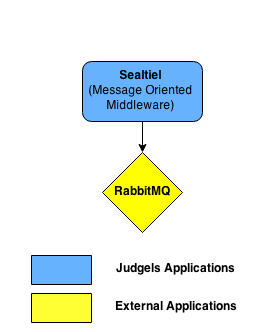
Gabriel
Gabriel has dependencies to Sealtiel for polling grading requests and to Sandalphon to get problem evaluator data.
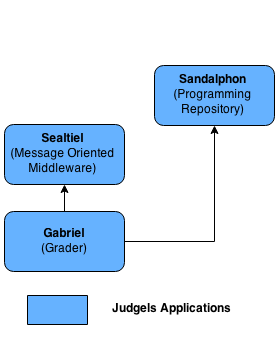
All Judgels applications dependencies can be shown in the image below.
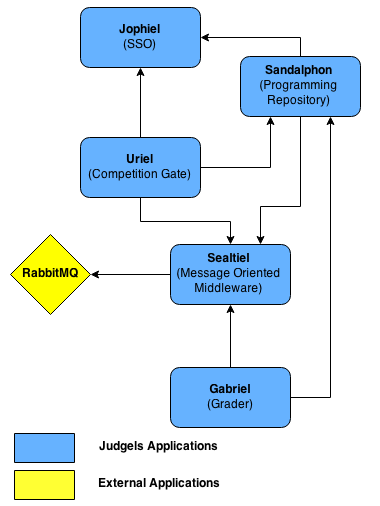
In Judgels web applications, we use Model View Controller (MVC) architectural pattern (the same pattern with Play Framework default). We use MySQl and Hibernate ORM for the databases.
We add some improvement to the pattern by using Services and Data Access Objects. By using those patterns, we can inject dependencies to create mock objects for testing purposes in the future.
Below are the image showing the flow of Judgels web applications.
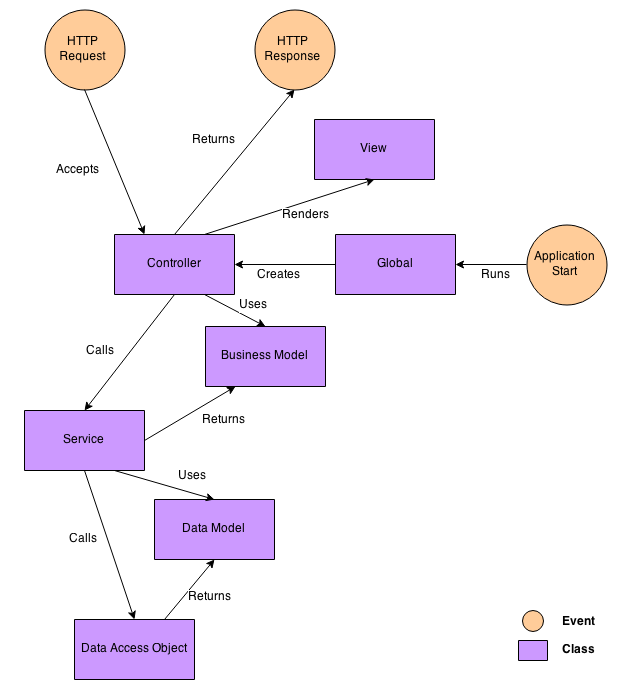
The explanation of elements are:
Global
Global is the Global Object in Play Framework. It has some methods that can be overriden to handle requests.
We use Global to construct DAOs, services, and controllers. By default, controllers in Play Framework are class with static methods. Controllers are designed to be stateless by that way. We change to construct it for dependency injection purposes.
Controller
Controller is the entry point of HTTP Request. HTTP Request trigger controller method call. We design controller to only check user permission and execute services. Controller can get business models from services as internal data for controller usage.
Service
Service is the layer that does all business logic of the system. Controller can call service to do some stuff and get business models. Service can call DAOs to do operation to databases or to get data models. By using services, we can create mock objects to do dependency injection for testing purposes.
Data Access Object
Data Access Object is an object that provides interface to do query to databases. The implementation depends on the database technologies that we used (in this case MySQL and Hibernate). By using DAOs, we can create mock objects to do dependency injection for testing purposes.
Data Model
Data Model represent the data structure used in the database. Every object in data model represent a row and field in data model represent a column in our cases. We use Java Persistence API annotations to annotate the constraints, table name, and other properties of the data model.
Business Model
Business Model represent the data structure that can be used by the controller. The data structure in business model doesn’t have to be the same with data model. The main purpose of business model is to display data for users.
View
View is used to display information and to provide user way to interact with the system. We use Play Framework’s default template engine which is Scala Template.
Application Start
Application Start is an event when the application started for the first time. In Play Framework, this event can be triggered by starting the application.
HTTP Request
HTTP Request is triggered when user open a web page either from browser or any other method.
HTTP Resposne
HTTP Response is the web page or any other content that are returned by the web application after processing the HTTP Request.